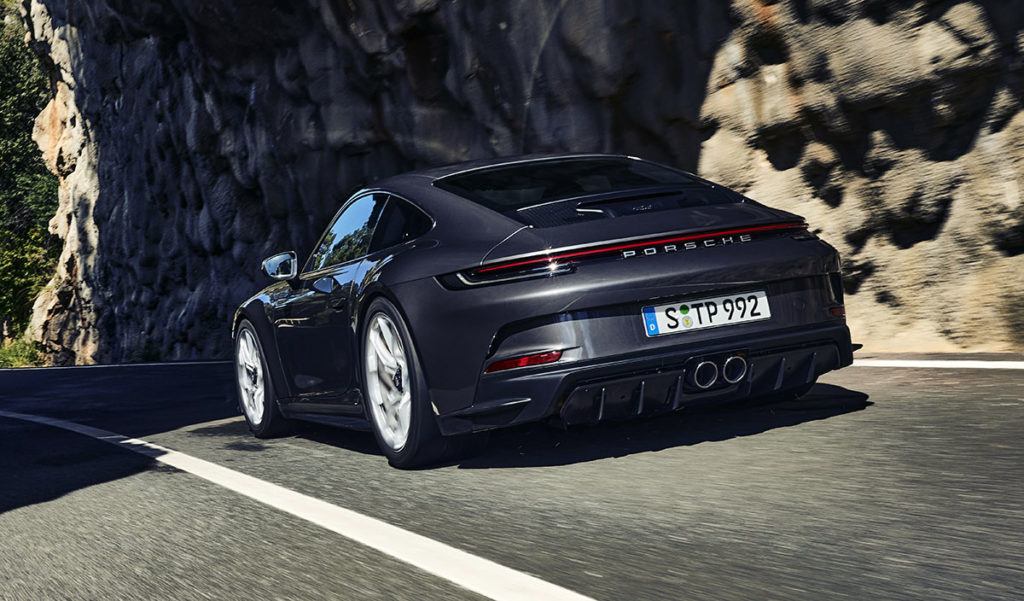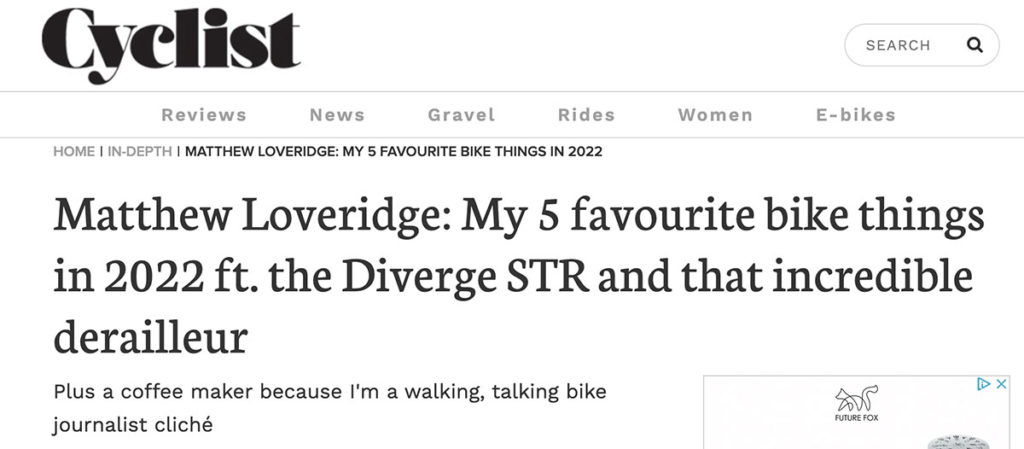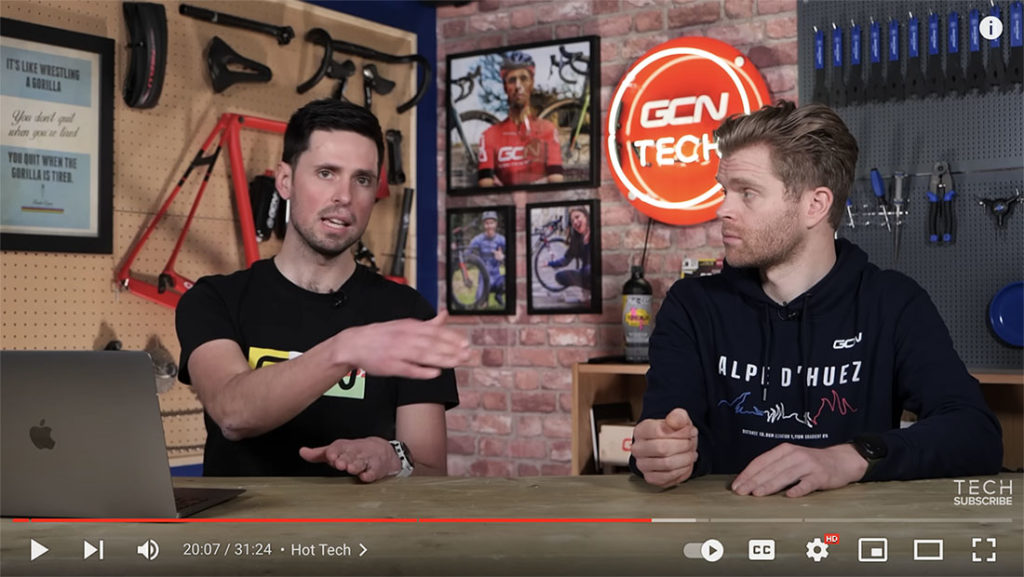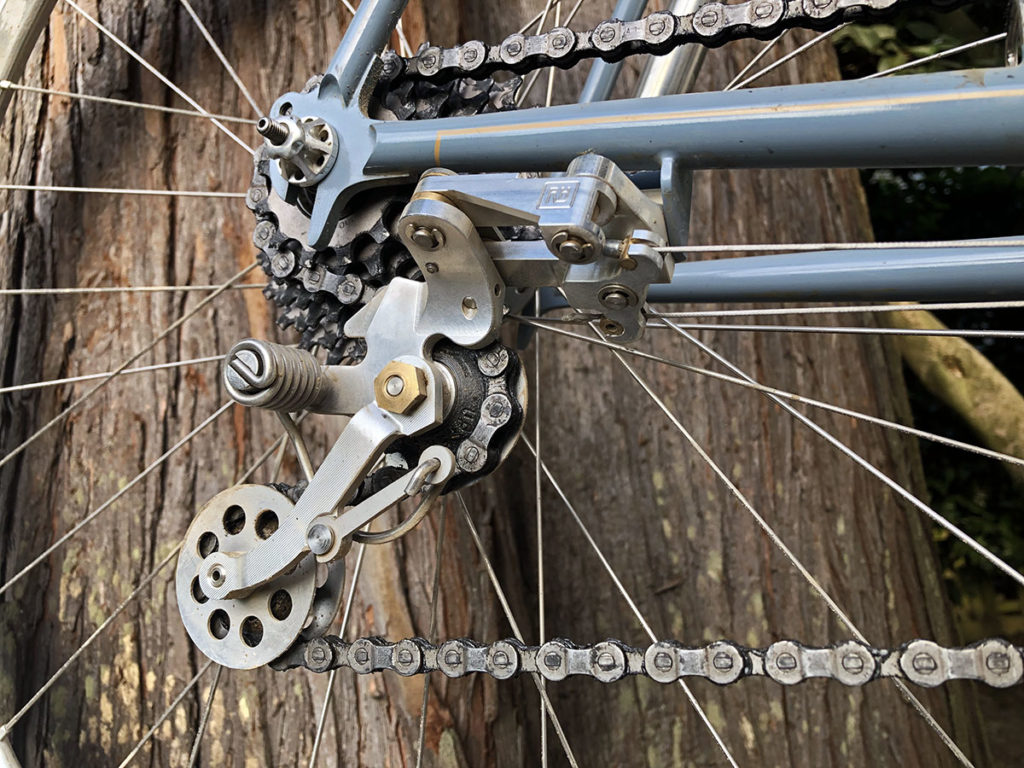Press Reactions to the Nivex Derailleur
Is it crazy to develop a new analog derailleur, when the entire industry is headed toward electronic shifting? Maybe… about as crazy as crafting mechanical watches. Or pressing new vinyl records. Perhaps the best example are cars: I love my 30-year-old Subaru because it’s analog. Most current cars have automatic transmissions and paddles on the steering wheel for when you want to select gears by yourself. My Subaru has the equivalent of downtube shifters: A lever on the transmission tunnel that connects directly to the gearbox. To shift, I take my hand off the steering wheel and move the lever. It’s fun to feel the gears mesh as I push them with the lever.

I drive very little, so owning a 30-year-old car is totally practical. If I wanted this analog experience in a new car, quite a few high-end sports cars offer a choice between electronic paddleshifts and manual transmissions. One example is the Porsche 911 GT3, the company’s top-tier model for people who enjoy driving (above). I’d love to try one: Porsche’s manual transmission probably has a shift quality that is far nicer than what I get in my old Subaru.
In the bike world, I can use obsolete parts and ride the equivalent of my 30-year-old Subaru. But if I want a new top-tier bike, my only option is a paddleshift. Developing high-end components for analog experiences isn’t on the radar of the bike world yet. But that may be about to change: Press reactions to our Nivex derailleur have been very encouraging. Whether it was bikepacking.com or The Radavist, news of the Nivex was widely reported. And two big cycling publications have covered the Nivex in detail and with a lot of enthusiasm. Both are from the UK, where mainstream cycling media apparently are willing to report on innovations even when they don’t come from their big advertisers.

Cyclist magazine’s Matthew Loveridge included “that incredible derailleur” in his list of “5 Favorite Bike Things in 2022.” It was nice to see the Nivex listed alongside Shimano 105 Di2—the drivetrain that finalizes the transition to electronic shifting for mainstream bikes. Matthew’s favorites mirror what we have found: Modern derailleurs work best in their electronic forms. And for those of us who want to be involved in our cycling experience beyond just pedaling and pushing buttons, there should be analog alternatives. Just like that Porsche GT3.
Matthew called the Nivex “thoroughly irrational in a very appealing way.” It’s nice to see that he gets it—after all, cycling itself is also ‘thoroughly irrational in a very appealing way.’ Unless you use your bike for transportation, most rides end up where they started and serve no real purpose…yet they are a lot of fun.
We never would have dreamed that the Nivex made into the ‘top 5’ of a mainstream cycling magazine…

Cycling media don’t come more mainstream than Global Cycling Network. The giant among online cycling media probably has more viewers than all other cycling websites combined. Part of that success is because they put on a good show. And part may be because GCN is willing to look beyond the status quo at new discoveries. Years ago, when wider tires were just starting to become popular, GCN was the first mainstream media to mention suspension losses—and they even gave credit to Bicycle Quarterly for introducing the idea to the cycling world.
Now GCN has devoted a significant part of their Hot Tech review (Episode 263) to the Nivex. The episode started with the ‘Most Unpopular Cycling Opinions,’ hence the misleading thumbnail for the video below.
“This thing looks incredible,” proclaim Alex and Ollie as they start talking about the Nivex. (Click ‘Play’ above and you’ll skip straight to the section about the Nivex.) They go on describe the desmodromic action—instead of a cable fighting against a spring, two cables provide positive shift action in both directions. They make a little light-hearted fun of the word ‘desmodromic,’ which hasn’t been used much in the cycling world. More seriously, they agree that mounting a derailleur on the rear dropout makes it vulnerable. Ollie points out:“Bikes always fall drive-side down—just like buttered toast.” They mention the ultralight weight of the Nivex and conclude with: “This is the sort of derailleur that you could buy and keep for the rest of your life.”
It’s nice that these big players get it—that there’s room (and maybe even a need) for products that prioritize analog cycling experiences, yet are competitive with the best mainstream systems. Hopefully, we’ll see more about analog cycling from them in the future.

And in case you wonder, like Alex, what ‘desmodromic’ means: It refers to a reciprocating mechanism that has separate actuations in both directions. The word is most commonly used for engines that don’t have springs to close the valves, but separate fingers that pull the valves closed. For example, Ducati motorcycles are famous for their ‘desmo’ engines. With bicycles, desmodromic refers to a derailleur that doesn’t have a return spring, but is moved actively in both directions, either by cables (Nivex) or a motor (electronic derailleurs).
A few other updates:
- The first run of Nivex derailleurs and shift levers sold out quickly. More are being assembled right now. This is very labor-intensive since all the parts are ‘blueprinted’—meaning they are carefully fitted and matched to one another. That way, the derailleur’s movements are as smooth and precise as possible.
- Nivex dropouts are on the way, too, together with all the other parts needed to complete the system.
- Read Matthew’s ‘5 Favorites’ on the Cyclist website.
- More information about the Nivex derailleur.
- We still have a few of the Nivex T-Shirts available. Get yours while you can!
Photo credit: Porsche AG (Photo 2)



